Part Five - Other European "Free Men"
Chapter 3 - The Balkans & Central Europe
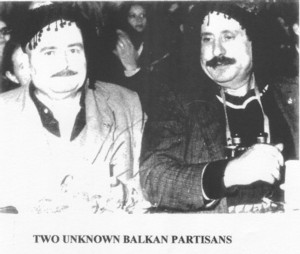
The politics of the Balkans and Central Europe have always been notoriously volatile.
Within any one country, they descend to tribal and even warlord ambitions for territory and local power. WWI started in Sarajevo and the underlying conditions in this part of Europe then, were little different from those prevailing today. Yugoslavia typifies the potent religious and territorial elements which are the heritage of age-old feuds, traditions, cultures and divided loyalties which suddenly combine into an explosive mix which, from a relatively minor incident, erupts into communal strife and group violence.
The world wide rise of Communism seemed to many to be the sole way to get out of a life of poverty, oppression and lack of personal freedom. Thus Communism was to become an extremely important constituent of partisan activity in Europe during WWII.
It was this political and social background of partisan activity which many AIF POW who were concerned with their survival could not understand nor generally accept. The military training of the escaped AIF POW had prepared him for a rough life of campaigning, but his egalitarian nature soon grew tired of political bickering and impatient with customs he could not understand, and if he did, could not really support.
The higher strategic political aims were beyond his general comprehension and certainly his control, but they often influenced the tactics of his day-to-day existence, shocked as he often was by the callous indifference to poverty and emphasis on class. The other side of the coin was the loyalty, courage and intelligence shown by the local peasants, whose harsh life he temporarily shared. To a large extent, it was immaterial to him in which particular country he found himself and whose incomprehensible language he could neither understand nor speak. Nevertheless an understanding and hence appreciation of his locality became important, and many escaped AIF POW soon found ways of bridging the communication and cultural gap.
Nevertheless, those AIF POW who managed to become "Free Men" in any of these countries, were still very much in enemy territory and if caught in civilian clothes, particularly those re-captured fighting alongside patriots of those occupied countries, were liable to be summarily shot as the story of Lawrence Saywell of 6 Div AASC, executed by an SS patrol in Czechoslovakia will bear sad witness.
Most German AIF POW escapees in Europe escaped from work camps established in Germany and its Central Europe satellites and managed to link up with friendly local citizens with ready access to their local partisan groups.
Some like VX6839 Jack Kerr of the 2/8th Inf Bn, who finished up in a work camp in Hungary, was able to write a letter home describing his improved conditions to his father and asking for greetings to be sent to the families of two other Australians with him - NX1342 H. Taylor of the 2/1st Inf Bn and VX46186 J. White of HQ Gd. Bn 6 Division.
Another AIF POW, VX6850 Cpl Donald McGregor of the 2/8th Inf Bn, was recruited by the SAS and served with a British Special Unit in Hungary.
VX15532 A.F. Ramsay, 2/2nd Inf Bn, escaped from Camp 344 Lamsdorf on 31.10.43 and managed to reach Odessa from whence he embarked on 08.03.45, disembarking in the Middle East five days later.
VX9921 Cpl. Henry Cooper, MM 2/1st Casualty Clearing Station, also escaped from Lamsdorf, hid in a coal truck and got as far as Vienna before being arrested and sent back to Lamsdorf. Undeterred, he escaped again, got as far as Stettin, and had arranged to board a Swedish vessel when he was caught again. For some time, he remained in the main camp but in November 1943, he was sent as a medical orderly to a civilian internment camp at Kreuzberg, but before his escape plans from there were brought to maturity, he was sent to France as escort for sick repatriates. To avoid return to Germany, he cut the perimeter wires and left Vittel internment camp. Until American troops arrived on September 8, 1944, he lived in the woods, serrving with the Maquis in their operations against the Germans. (Extract from citation - Parker File).
As the Third Reich collapsed in the Spring of 1945, most allied POW were marched from their semi-permanent camps to delay their liberation by the rapidly advancing Allied Forces and for use as potential bargaining chips. For some, the conditions became impossible and they did not survive.
Others, like Gunner Ian Ramsay of the 2/2nd RAA, walked out of their camp in Bavaria when it was deserted by the Germans and made his way to Paris and Freedom.
References:
D5 "Hitler's Digger Slaves", Alex Barnett, Sydney, 2001. ISBN 1876439734
D7 "POW" - A Digger in Hitler's Camps", Ian Ramsay, Melbourne, 1985. ISBN 0333381378
D9 "Stoker", Donald Watt, Sydney, 1995. ISBN 0731805194
Box 11 CARO
Albania
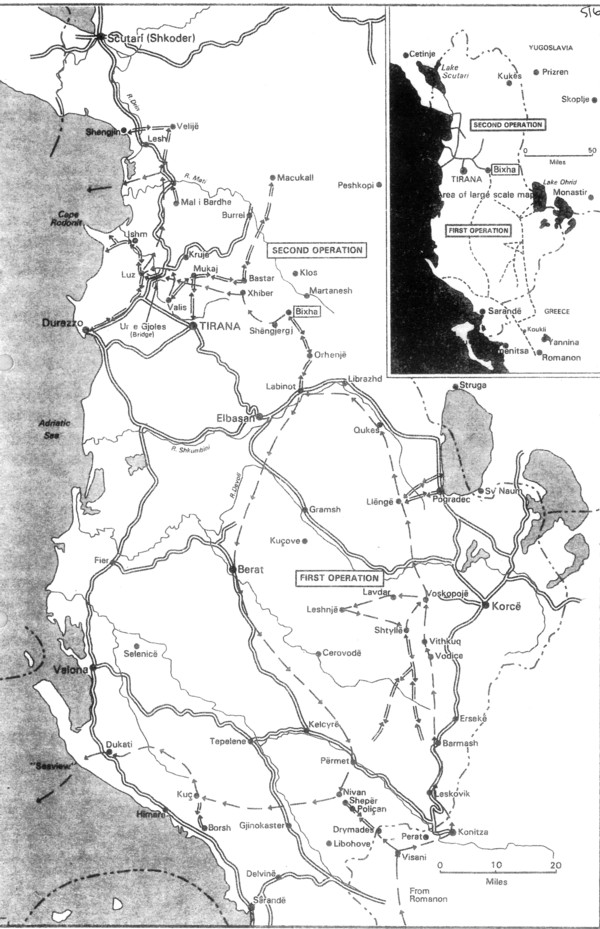 Of all the Balkan countries, Albania is the smallest and probably the poorest and most backward. Lying south of Yugoslavia, like that country, it faces Italy across the Adriatic. However Albania did have deposits of copper and chrome, which were important materials for the Axis economy.
Of all the Balkan countries, Albania is the smallest and probably the poorest and most backward. Lying south of Yugoslavia, like that country, it faces Italy across the Adriatic. However Albania did have deposits of copper and chrome, which were important materials for the Axis economy.
The population is largely Muslim with two major racial groups - the somewhat music-hall named Ghegs in the north and the Tosks in the south. The relatively poor and royalist north was lead by Abas Kupi, a royalist, while the leader of the more industrialised south was the communistically inclined Enver Hoxha. Albania was a monachy, but when Mussolini invaded it in April, 1939, King Zog went into exile in London.
Towards the end of 1941, Enver Hoxha, who had trained in Russia, established a Communist-dominated national liberation movement - the Levisiya Nacional Clirimtare or LNC, who managed to arm themselves well with captured Italian weapons and ammunition. At the same time, the more conservative elements, including the royalists, set up a rival National Patriotic Front, the Balli Kombetar or BK under Abas Lupi.
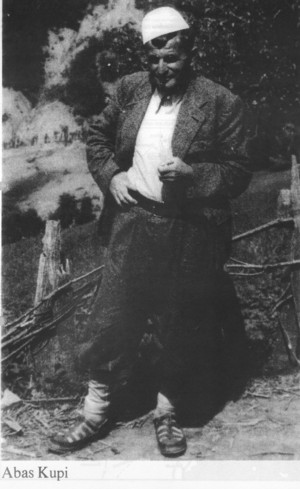
After the Italian Armistice in 1943, the Germans landed paratroops in Tirana, and took over the administration of Albania. Abas Lupi seemed more concerned to check communism than fight the Germans who were not so fiercely hated as the Italians, but politically, Enver Hoxa was to gain the upper hand, just as Tito had prevailed over Michailovitch in Yugoslavia.
The SOE Mission to Albania tried to bring the LNC and BK together in operations against the Axis powers and arranged air drops supporting both, much as they did in Yugoslavia with Tito and Michailovitch and with much the same result. Neither the SOE nor the OSS seemed to have contributed sucessfully to Albanian partisan operations against the Axis enemy. M.R.D. Foot (M35 p241) quotes the story of 13 United States Army girls, who were landed by mistake on a deserted Albania airfield. The USAAF staged a rescue mission with a Wellington, 2 Dakotas and 36 Lightning fighters, only to find out that the SOE had quietly smuggled out the girls by sea. "All by that time had collected body lice, but they enjoyed their trip".
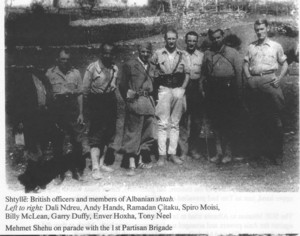
To date the Recorder has been unable to gather any material about ANZAC participation in partisan activities in Albania, and that country is not even mentioned in W. Wynne Mason's definitive official NZ POW history. This seems strange, as Albania faces southern Italy across the Adriatic and has a long border with Yugoslavia.
References:
HA1 "Albanian Assignment", David Smiley, London, 1984.
M35 "SOE -1940-45", M.R.D. Foot, London, 1984. ISBN 0563201932 p240-43
M44 "The Partisans", David Mountfield, London, 1979. ISBN 600371522 p13-24
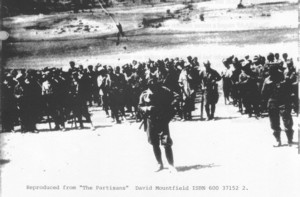
Bulgaria
At the outbreak of WWII Bulgaria was a monachy with a national language somewhat similar to Russian.
Tucked in by Rumania, Yugoslavia, Greece and Turkey, Bulgaria does have a coast on the Black Sea. Had Turkey not managed to retain her neutrality thoughout the war, Bulgaria might well have been the German springboard to the Aegean, being stoutly defended by Greece with whatever aid the Allies could provide. It suited the Germans to take over Yugoslavia and Bulgaria as their vital supply lines to Greece ran through those countries but the German conquest of Crete and the continued maintenance of Turkish neutrality undercut that strategic importance.
Once the Greek campaign had ended, the Germans rapidly deployed their Balkan armies for the attack on Russia. By 14th May, only three armoured and fifteen unarmoured divisions remained in the Balkans - by 21st June, no armoured divisions and seven unarmoured divisions (A4 p193)
Although under German influence, Bulgaria declared war on Britain and America, but it never declared war against Russia, who maintained an Embassy in the capital, Sofia. Nevertheless, there was an active underground movement in Bulgaria, dominated, but not entirely controlled by Communists which was supported both by the SOE and the OSS who managed to rescue many American airmen held in Bulgaria. When Russia finally declared war on Bulgaria in September 1944, both organisations were ordered to leave by the Red Army.
Any strategic interest in Bulgaria by the Americans and British had waned, and they were content to leave its control to the Russians, who wasted no time in absorbing the Bulgarian armed forces into their own.
The large POW camp Shumen, outside Sofia contained many Allied airmen (see report of the crew of a Wellington Bomber piloted by F/Sgt K.C.J. Martin RAAF. AWM54 781/6/7) and several unfortunate AIF POW escapees who had managed to get near Bulgaria were murdered in that country, including VX5102 Stewart Emerson Brown 2/5th Inf Bn VX9752 Sgt William Howard Reid 6th Div HQ both killed by Bulgarians whilst fighting with Yugoslav partisans.
References:
M34 "SOE - Recollections and Reflections", J.G. Beevor (p292-3), CARO Box 11, AWM File 144/25/239
HB1 "Beyond the Frontier", E.P. Thompson, Merlin Press, Stanford, 1997.
Czechoslovakia
Like Yugoslavia, Czechoslovakia was a relatively modern state, stitched together from the long standing countries of Bohemia, Moravia, Slovakia and Ruthenia. The Germans knew Bohemia as "Sudetenland".
The State of Czechoslovakia had no place in Hitler's "New Order of Europe" and when Neville Chamberlain signed the Munich Agreement of September 1938, it validated the annexation of the Sudentenland by the Germans. This was a masterstroke for Hitler, as the Czech Army, backed up by an efficient armaments industry, would have been a formidable opponent to that of the Third Reich. Instead this strength was added to it.
The Munich Agreement between Hitler and Chamberlain sealed the fate of Czechoslovakia as a state, and the Germans were soon in control in Prague.
Prime Minister Benes resigned, and set up a Free Czechoslovakian Government in exile in London. Anxious to keep the Czechoslovakian armament industry working at full capacity, the Germans appointed a relatively benign "Protector" Konstatin von Neurath. But he was soon to be replaced by the super-tough S.S. General Reinhard Heydrich.
The story of Heydrich's assassination by two Czech patriots, Josef Gabcik and Jan Kubis, meticulously planned and implemented by Benes in London can be read in Alan Burgess's book "Seven Men at Daybreak" HC1.
When Hitler invaded Russia,it was inevitable that Czechoslovakia would be one of the many Central European states to fall under the domination of the USSR, despite the presence of Benes and his London based Government-in-exile.
Those AIF POW who managed to become "Free Men" in Hungary, Czechoslovakia, Poland and Rumania, and other countries to fall behind the iron curtain were not interested in politics and the growing design of Russia to replace Germany as the master of Europe. They were still very much in enemy territory and if caught in civilian clothes, fighting alongside patriots of those occupied countries, were liable to be shot on the spot.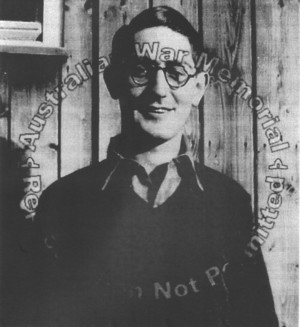 The story of Lawrence Saywell, AASC, executed by an SS Patrol in Czechoslovakia on the very last day of the war in Europe will bear tragic witness.
The story of Lawrence Saywell, AASC, executed by an SS Patrol in Czechoslovakia on the very last day of the war in Europe will bear tragic witness.
References:
HC1 "Seven Men at Daybreak", Alan Burgess, Evans Bros, London, 1960.
M35 "SOE - 1940-45", M.R.D. Foot, 1984, ISBN 0563201932 (p199-203)
M44 "The Partisans", David Mountfield, 1979, ISBN 600371522 (p25-35)
NX6401 Lawrence Phillip Saywell 17th Brig Coy AASC
Lawrence Saywell was reported missing on June 5, 1941 after the evacuation of Crete and confirmed as a POW in Stalag VIIB in Lodz, Poland on October 24, 1941. His German POW number was 92550 and he was listed as being in Camp 344 Lamsdorf.
In January 1943, he was transferred to Kommando E7010, a prison camp in Bohemia from which he escaped with three othe POW's during a route march. They were sheltered by local villagers and in return offered to assist the Czech partisans in their sabotage operations.
On May 8, 1944 (V-E Day), he was picked up by a German SS Patrol and shot in the head. His summary execution made him the last Australian killed in Europe. He is buried in the Evangelical Cemetery in Miretin, Czechoslovakia.
Five months after his murder, a memorial was erected in his honour by the "grateful inhabitants of the village of Miretin".
In November 1945, the President of the Czechoslovak awarded Lawrence Saywell the Czechoslovak Military Cross for "his brave and eminent services to our State in the battle for liberation".
Reference:
AWM Photograph Data Base Neg PO2551.001
Hungary
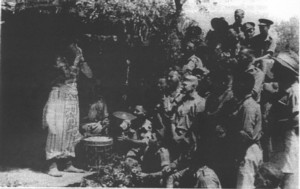 As in most of the Axis occupied countries, Allied support for the local partisans was co-ordinated and supplied by Missions established by the SOE.
As in most of the Axis occupied countries, Allied support for the local partisans was co-ordinated and supplied by Missions established by the SOE.
Not to be outdone, the Americans established their own similar organisation - the OSS, particularly in countries in which they had a special interest, or which were holding significant numbers of American POW, mainly air-crew. This partnership had been very effective in Italy, but their attempts to establish successful operational bases in Hungary failed.
Most of the upper class and rulers of "Mitteleuropa" were traditionally pro-British but in Hungary the then strong man Admiral Horthy decided to support Germany by declaring war on Russia. But later, the success of the Allies in North Africa and the defeat of the German Army at Stalingrad made him have second thoughts.
When the Italians surrendered in September 1943, he tried to come to an arrangement with the Allies. Having lost out, he preferred that to domination by the Russians. However, he lost out again when the Germans occupied Hungary on March 19, 1944.
He was not to have a third chance for by war's end, Hungary, like Poland and Bulgaria, was a Soviet satellite.
Several members of the 2/8th Inf Bn escaped from their work camps in Austria into Hungary and VX6850 Cpl Donald John McGregor, MID spent over a year with an SAS group operating there before he was re-captured by the Germans after their occupation.
His story follows.
References:
M35 "SOE 1940-46", M.R.D. Foot p.203-5
M34 "SOE - Recollections and Reflections", John Beevor p.202-3
M36 "Special Operations Europe", Basil Davidson p.54
Box 11 CARO
Letter home from VX6839 Jack Kerr
The Szigetvar Estate
Just as the geographical location of the work camps of the Campo 106/Vercelli complex in North Italy favoured ANZAC escapers to reach Switzerland, the location of the work camps around Marburg (Maribor) in East Austria, favoured escapers to find sanctuary in what was then the neutral country of Hungary. As early as 1941, some Allied POW, had managed to get away from their work camps in Eastern Austria into Hungary.
"At first these men were held in a prison at Siklos, where conditions were bad but later they were treated as military internees and housed in the Komarom camp for internees, where there were refugees from all the countries of German occupied Europe. Later still, they were given the rights of "free internees", corresponding to the status laid down in the Hague Convention for escapers who reached a neutral country, and were accommodated on the estate of a Hungarian Count at Szigetvar in the south. They were allowed the freedom of the town of Szigetvar and its neighbourhood to a radius of six miles.
"By December 1943, there were some twenty British other ranks living there very comfortably and being well looked after, doing nominal work on the estate in return. It was inevitable, however, that in time some of them would become restive under their enforced inactivity. There was some dissatisfaction also among the local Hungarians, who worked long hours but noticed that although the British escapers did not, they always had plenty of money to spend in the local taverns." (A4 p385)
One senior British Officer, a South African Lieutenant Colonel, was located in Budapest and acted as a contact between the British Legation and the escapees. A sapper from the 6 Fld Coy 2NZEF, R.S. Natusch, was moved from Budapest to Szigetvar with the rank of Captain, ostensibly to maintain discipline there, but he may have been, like Peck and Jocumsen in Italy, recruited by SOE to organize local partisan activities and establish safe escape routes for POW. Certainly plans were made to build a makeshift landing strip for bringing in a British Mission and there was an SAS unit operating on the estate.
These plans were thwarted by the formal occupation of Hungary by the Germans on March 19, 1944 and those British escapees at Szigetvar were no longer protected by the Hague Convention and were swiftly rounded up and taken back to Austria by the Germans. These included "Captain" Natusch and Don McGregor, who were later both to escape again from their Austrian camps. Some other British escapees, at another estate at Lehervar, were taken to Zugleit prison by pro-Allied Hungarians without the knowledge of the Germans, preparatory to being taken out of the country at a later date, but were betrayed and also returned to Germany.
In due course control of the Szigetvar Estate was to pass from German to Russian hands.
Reference:
A4 "Prisoners of War" - Official History of N.Z. in WWII", W. Wynne Mason, 1954.
VX6850 Cpl Donald John MacGregor MID, 2/8th Inf Bn
Like most POW of the 2/8th Battalion, Cpl Don MacGregor was among the casualties of the battle at Vevi Pass, Greece. After being overrun by the enemy, he and several others hid in the mountains, dodging German patrols. With them was their platoon Sergeant, Harry Williamson, who had been shot through the hip. Don with several other men looked after him as best they could, but movement was difficult and very hard on Harry.They made an improvised stretcher using their rifles and groundsheets and kept moving around to avoid detection. Don had started his service in the 2/8th Band before transferring to the A/A Platoon in Palestine, so his knowledge as a stretcher bearer came in handy. However, after four days, with Harry's condition worsening, they were finally forced to turn him and themselves over to a German Field Hospital and thus captivity.
During their movements north as POW, they were strafed by the RAF and Don suffered shrapnel wounds to his right chest and temple (the piece of metal in his temple was eventually removed at RGH Concord in 1973.)
Don MacGregor was officially reported German POW No 156110 at Stalag 18 A (Liena/Drau) on April 14, 1941 which is close to the Austria/Hungarian border.
After several escape attempts and movements between camps, Don then turned up in Hungary with VX6839 L/Cpl Jack Kerr, a mate from the 2/8th. A letter written by Jack Kerr to his parents from Hungary indicates that conditions were much better there than in Germany. (Hungary remained a neutral country until occupied by the Germans.)
They escaped from their Hungarian work camp and may have joined a local group of partisans, for Don MacGregor appears to have joined a British SAS group operating with Hungarian partisans, under command of a New Zealander "Captain" Roy Natusch.
Don MacGregor spent over a year with this British group at Szigetvar Estate, but was eventually recaptured when the Germans occupied Hungary in March 1944. He later escaped from another camp in Austria and was finally repatriated back to Australia through the AIF Reception Camp established at Eastbourne on the English south coast.
On the 23rd January, 1947, Don was awarded the MID for gallant and outstanding services whilst a POW in Europe. Don re-enlisted in the Australian Army Engineers on November 19, 1947. He served in Korea and Malaya and was commissioned on December 10, 1961. When he finally became a civilian again on December 2, 1973, he did so as Major Don MacGregor, Chief Engineer, Eastern Command and 2nd Military District.
In 1975, Don and his wife Elsie, travelled back to England and Europe.
Don kept a diary of this trip and although brief, he has recorded in it mention of events and places where he had been during his time as a POW. While this trip down memory lane did not sequentially follow his itinerary as a POW moving, and escaping, from camp to camp, it does highlight the drama of his experiences.
Some extracts from this diary personalise the account above.
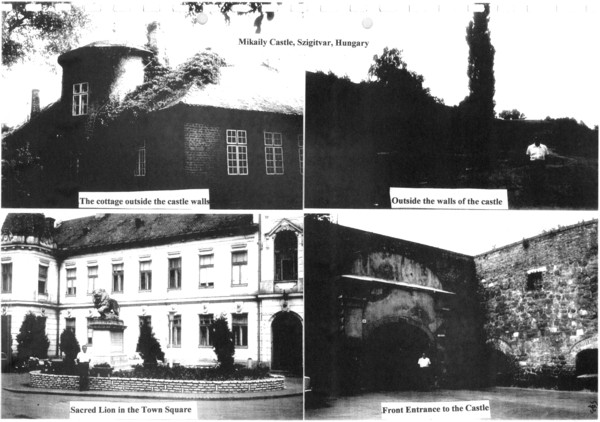
Dairy Extracts:
"It does feel good to be in Austria again. Vienna is so beautiful and so full of everything. It is thirty one years since I was last through the city, in chains with six guards on my way to Krems (Wrems?) POW camp."
"Crossed the Hungarian border .... Passed through Kermoran (Komarom?) where Jack Kerr and I were imprisoned in the old gaol for about 3 weeks, way back in 1943."
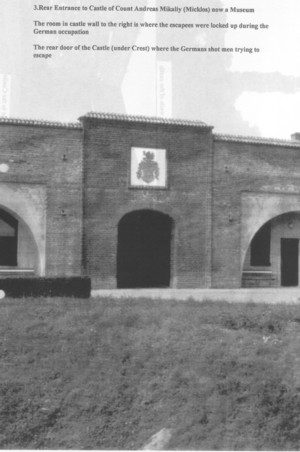 "A very memorable day for me ... boarded the express to Pecs arriving there at 11.15 hrs. After sorting out our language problems, we established that the best way to Szigitvar was by the train, so away we went, arriving there at 13.25 hrs. It certainly brought back some some memories for me! Nothing had changed much despite the fact that it is almost 32 years since I left there under heavy German guard, worried because I was in civilian clothes. The town is the same and the old sacred lion which I rode home New Years Eve (1943, I think) was still there and I was pleased to see the castle and the buildings were there, just as I remembered them. The castle of Andreas Mikailly (Miklos) is now a museum and well kept. We took some photographs, the lion, the room in the castle walls where we were locked up after the German occupation. We photographed the door in the hall where MacDonald and one other made a dash for it, but they were shot, also the roof where our Hungarian member tried to hide. I was glad we went, especially me."
"A very memorable day for me ... boarded the express to Pecs arriving there at 11.15 hrs. After sorting out our language problems, we established that the best way to Szigitvar was by the train, so away we went, arriving there at 13.25 hrs. It certainly brought back some some memories for me! Nothing had changed much despite the fact that it is almost 32 years since I left there under heavy German guard, worried because I was in civilian clothes. The town is the same and the old sacred lion which I rode home New Years Eve (1943, I think) was still there and I was pleased to see the castle and the buildings were there, just as I remembered them. The castle of Andreas Mikailly (Miklos) is now a museum and well kept. We took some photographs, the lion, the room in the castle walls where we were locked up after the German occupation. We photographed the door in the hall where MacDonald and one other made a dash for it, but they were shot, also the roof where our Hungarian member tried to hide. I was glad we went, especially me."
"...we got through the border and passed through Furstinfield and Gleisdon and reached the city of Graz. A very beautiful city and filled with memories for me! For it was here in 1942, I was court-martialled for "Mutiny"! - 5 months.
"... we set off for Salzburg ... Salzburg was where Jack and I and Stan first got through to the American Lines and freedom in 1945 ... crossed the German border ... the country had flattened out a bit as we neared Munich, much different from the bombed out city we saw in 1945, where Jack and I purloined a Ford V8 and continued our tour of Germany as free men."
References:
HH1 "Double Dutchman", Francis Jones, UK and NZ, 1977. ISBN 0908564015
B8 "The Second Eighth", H. Bentley, Melbourne. ISBN 095906190
Box 11, CARO, Melbourne.
Acknowledgements and Thanks to:
Keith Hill
Elsie McGregor
Roy Natusch
33965 Spr Roy Natusch 6 Field Coy 2NZEF
Sapper Roy Natusch was a member of the Anglo-ANZUK force that went into Greece and became a German POW there. He teamed up with an Australian, NX9269 Sgt John Sachs but after 7 months together underground and many attempts to escape to Allied Lines, they split up near the naval port of Poros, where Roy decided to join a party who seized an ex-Greek naval boat being serviced in that port, while John Sachs joined two English officers waiting to be picked up by a vessel smuggling figs on a run between Crete and Smyrna in Turkey. Roy's boat trying to reach Turkey was intercepted by an Italian motor-torpedo boat and thus he became an Italian POW.
John Sachs had more luck in his choice of boats and finally reached Cairo.
He won the MM, became a Lieutenant on his return to Australia and eventually disappeared behind Japanese lines while on a commando mission with "Z" Force. His full story is told in her book "Heroes of Raimu" HH3 by Lynette Ramsey Silver.
Roy Natusch ended up in Campo 57 Gruppignano in October, 1942. He was one of the 19 POW who escaped through a tunnel they dug under the perimeter wires of that imfamous camp. But all 19 were re-captured and Roy was transferred with the rest of the camp by train to Spittal in Austria when the Germans took Campo 57 over in September, 1943. But little more than a month later he escaped from a German work camp near Graz to nearby Hungary.
At that time, Hungary was still a neutral country and the British Legation at Budapest acted as a contact with the Allied escaped POW "Free Men" who had originally been held in a prison at Siklos, but later treated as military internees in a internee camp at the old fortress of Komarom. Later still they were granted their full rights as "free internees" under the Hague Convention and were accommodated on the Szigetvar Estate of a Hungarian Count, Miklos Andrassay, where they were allowed the freedom of the local town and a radius of 6 miles around it. By December 1943, there were some twenty British other ranks living there very comfortably, being well looked after, and doing nominal work on the estate.
The Senior British Officer in Hungary was a South African Lieutenant Colonel, Charles Howie, based in Budapest. Unlike Peck and Jocumsen in Switzerland, who had been recruited by the SOE, given the temporary rank of Captain and sent back to Italy as British Liaison Officers, when Sapper Roy Natusch was charged by Colonel Howie to maintain law and order on the Estate, whose owner was a member of the local underground, co-ordinating the establishment of a resistance movement with SAS support and guidance, he gave himself the rank of "Captain" on his arrival there.
The Hungarian partisans were planning to construct an air-field near the estate to become operative after the Allies broke through the German lines in Italy, at Cassino. But the battle for that Italian monastery was fierce and prolonged and the expected air cover and supplies for a local Hungarian uprising planned for November, 1943, never became a reality.
When the Germans occupied Hungary in March, 1944, "Captain" Roy Natusch was again re-captured with twenty other POW which included at least two Australians, Cpl Don MacGregor and L/Cpl Jack Kerr both of the 2/8th Inf Bn. Only two Englishmen from the group at Szigetvar managed to escape.
The SS police were particularly interested in the role that Roy Natusch and Don McGregor had planned in the construction of this airfield and after a preliminary brutal interrogation sent them by separate trains to Gestapo HQ in Germany.
The Gestapo suspected that Roy Natusch was not the officer he pretended to be and further suspected that this was a cover for his underground activities with Hungarian patriots. He was taken to a Gestapo interrogation centre near the Baltic while Don MacGregor was sent to Stalag 18A at Lamsdorf.
But again Roy jumped from the train taking him to Gestapo HQ in Berlin, where fingerprints would have revealed his true identity. He injured himself and was taken to Breslau Hospital. But he did manage to avoid further Gestapo interrogation. He was sent back to Wolfsberg. Later he managed to get sent out again to a workcamp, sucessfully escaping yet again from a farm at Radkersburg which was close to the Yugoslav border.
With a pre-arranged plan, he reached a band of partisans near Marburg, and after a gruelling march with them finally reached Semic on October 9.
Subsequently he was airlifted out to Bari in Italy a couple of weeks later.
There was a well organised escape route from the camp at Marburg (Maribor) into Yugoslavia where British Missions operated to get Allied POW back to liberated Italian territory on the Adriatic coast.
References:
A4 "Prisoners of War" - Official History of N.Z in WWII", Wynne Mason.
K1 "A Hundred Miles as the Crow Flies", Ralph Churches, 1996, ISBN 0646391178
HH1 "Double Dutchman", Francis Jones, NZ, 1977. ISBN 0908564015
HH3 "Heroes of Raimu", Lynette Ramsey Silver, Sally Milner Publishing, Sydney, 1990. ISBN 1863510184.
See also other references under the HH category.
Acknowlegments and Thanks to:
Keith Hill
Paul London
Elsie MacGregor
Roy Natusch
Lynette Silver
Poland
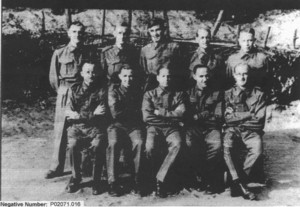
Poland was not a cartographer's creation and was a country well-used to foreign hegemony. The Poles had learnt many lessons from their experiences under occupation.
They had drawn up plans for underground resistance long before the Nazi invasion and had become particularly skillful in the field of ciphers. It was the Poles that were able to pass to their traditional allies France, and to Britain, models of the Enigma enciphering machine, which was to prove invaluable in breaking German codes in which they transmitted operational orders. The Polish pilots contribution to the Battle of Britain is legendary and no Australian "Rat of Tobruk" will ever forget their contribution to the defence of that Lybian port (3A p321). One whole Polish Division had eluded captivity by marching into Switzerland as a complete fighting unit, interned and then swapped in a deal with Vichy France (see Volume One).
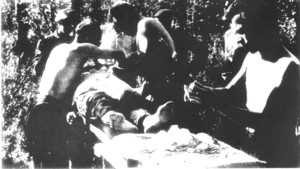 The Polish government-in-exile under the redoubtable General Sikorski, maintained close contacts with the Armia Krajowa (AK) the underground army within Poland while building up a formidable fighting force abroad.
The Polish government-in-exile under the redoubtable General Sikorski, maintained close contacts with the Armia Krajowa (AK) the underground army within Poland while building up a formidable fighting force abroad.
Situated as it was between the super-powers of Germany and Russia, Polish leaders tried to play one off against the other. This policy was aided by the firm alliance made with Britain but crashed in August, 1939, with the signing of the non-agression pact between Germany and Russia. Hitler's invasion of Poland the following month started WWII. Polish Jews were quick to feel the attitude of their new rulers towards them.
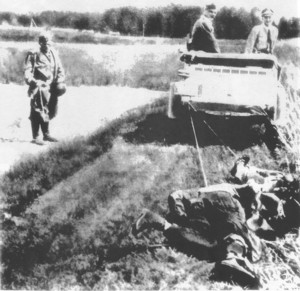 To some extent, the geographical isolation of Poland inhibited Allied support of their resistance movement and this same factor made successful escape a difficult mission for AIF POW sent to "arbeitskommandoes" in Poland. Nevertheless, VX9921 Cpl Henry Cooper, a medical driver attached to the 2/5th AGH was awarded the MM for his.
To some extent, the geographical isolation of Poland inhibited Allied support of their resistance movement and this same factor made successful escape a difficult mission for AIF POW sent to "arbeitskommandoes" in Poland. Nevertheless, VX9921 Cpl Henry Cooper, a medical driver attached to the 2/5th AGH was awarded the MM for his.
The 2/5th AGH which had set up for the Greek Campaign at Kokkina, pulled out after most of their patients had been evacuated to Salonika, on the Italian hospital ship "Gradisca" following them there. The last party of this unit left Salonika on December 14, 1941 for Thorn in Poland "reaching them there at Stalag XXA, after a 12 day journey in horse trucks." (A3 p789).
When the Russians crossed the Vistula in early 1945, the Germans evacuated Thorn (then known as Stalag 357) marching the inmates in terrible conditions westwards to Fallingbostal (see "Hitlers Digger Slaves" p 263).
References:
3A "Tobruk to Alamain", Barton Maughan, AWM, 1953.
HP2 "Hitler's Digger Slaves", Alex Barnett. p132 et seq
D7 "POW in Hitler's Digger Camps", Ian Ramsay, p.147-52
B entry #593 p130 "Proudly We Served", Innes Brodziak - Compiler 2/5th Aust Gen Hosp Assn, 1988.
M35 "SOE 1940-46", M.R.D. Foot p.191-94
M44 "The Partisans", David Mountfield, p.37-59.
Rumania
The German occupation first of Austria and then Czechoslavakia brought them closer to the oil fields of Ploesti in Rumania which was extremely important to the Nazi war machine. So much so, that when the German High command decided to invade Yugoslavia in April, 1941, they included the occupation of Rumania in their detailed plans. Both the SOE and the German Abwehr were well aware of the importance of the Ploesti oilfields which were heavily guarded. Spasmodic bombing raids were carried out by British bombers based in Libya, but it was not until 1944 when large American daylight bombing raids were mounted from airfields in southern Italy that serious damage was caused to its operations.
King Carol had fled to London in 1939, leaving the pro-German Marshal Antonescu in charge. He was succeeded in 1944 by his son King Michael, who dismissed Antonescu.
The OSS had been active in organising the rescue of many American airmen incarcerated in Rumania but as the strategic importance of the Balkans waned for the Allies, the politically motivated Russians took control in Rumania and dismissed both the SOE and OSS presence as they also did in Bulgaria (See Beevor M34 p204-5).
Nevertheless in August 1944, an OSS team of 21 landed at Popesti airport and evacuated over thirteen hundred American airmen.
Like Bulgaria, when the war in Europe ended, Rumania dropped out behind the Iron Curtain.
References:
HR1 "Beacons in the Night", Franklin Lindsay, 1993. ISBN 0804721238 p.271
M35 "SOE -1940-46", M.R.D. Foot, BBC, 1984. ISBN 0563201932
M34 "SOE - Recollections and Reflections", J.G. Beevor, London, 1981. ISBN 0370304144.